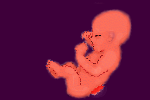meningomyeloseele.fi > tietoa > lähteet
TIETOA
Lähteet:
Kirjalliset:
-AHONEN, Jarmo ym. (toim.)(1998): Alaraajojen rakenne, toiminta ja kävelykoulu. VK-kustannus, Jyväskylä.
-BAKER, Lucinda ym. (2000): Neuromuscular Electrical Stimulation, A Practical Guide 4th Edition. Rancho, California USA.
-BEAR, Mark F. ym. (2001): Neuroscience, Exploring the Brain. Lippincott Williams & Wilkins, USA.
-HAY, William W. Jr. ym (2003): Current Pediatric Diagnosis & Treatment. McGraw-Hill, USA.
-LYYTINEN, Heikki ym. (toim)(1995): Oppimisvaikeudet, neuropsykologinen näkökulma. WSOY, Juva.
-LÖPPÖNEN, Tuija (1997): Growth and Pubertal Maturation in Children with Shunted Hydrocephalus. Acta Universitatis Ouluensis D 431, Oulu.
-MCLONE, David G ja KNEPPER, Paul A (1989): The Cause on Chiari II Malformation: A Unified Theory. Original Papers. Pediatric Neuroscience 1989;15:1-12. S.KargerAG, Basel.
-MENKES, John H. ja SARNAT, Harvey B.(ed.)(2000): Child Neurology, sixth edition. Lippincott Williams&Wilkins, USA.
-PESONEN, Niilo (1961): Ihmisen anatomia. WSOY, Porvoo.
-Scientific Publishing Ltd (1999): Muscular System. M.A.M.S.
-Sillanpää ym.(toim)(2004): Lastenneurologia. Kustannus oy Duodecim.
-Suomen CP-Liitto ry (1998): Elämän maku, Tietoa ja kertomuksia hydrokefaliasta ja MMC:stä. Edita, Helsinki.
Sähköiset:
-ALENIUS, H. ym. (1993): IgE reactivity to 14-kD and 27-kD natural rubber proteins in latex-allergic children with spina bifida and other congenital anomalies.Int Arch Allergy Immunol. 1993;102(1):61-6 (PubMed abstrakti).
http://www.ncbi.nlm.nih.gov/entrez/query.fcgi?cmd=retrieve&db=pubmed&list_uids=8400886&dopt=Abstract
-ASCHOFF, Alfred (1999): What is the state-of-art of shunt technology? Neurochirurgische Klinik, Ruprecht-Karls-Universität Heidelberg
http://www.med.uni-heidelberg.de/nch/literat/abstr033/abstr033.htm
-DENNIS, Maureen (2002): Math and Numeracy in Young Adults with Spina Bifida and Hydrocephalus.(abstrakti, koko artikkeli maksullinen)
http://www.leaonline.com/doi/abs/10.1207/S15326942DN2102_2;jsessionid=iwhBE7o1pYQ_
-ELLENBOGEN, Richard G. (2003): Neural Tube Defects in the Neonatal Period. eMedicine
http://www.emedicine.com/ped/topic2805.htm
-FRIED, Arno H. ja EPSTEIN, Mel H (1993): Childhood Hydrocephalus: Clinical Features, Treatment and the Slit-Ventricle Syndrome. Neurosurgical Quarterly, Nov. 1993.
http://virtualtrials.com/shunts.cfm
-HELLER, Wendy (1997): Understanding Nonverbal Learning Disability,Developmental Processes and Dysfunction of the Right Hemisphere: Implications for Learning and Social Perception.
http://www.nldontheweb.org/heller.htm
-HORD, Eugenia-Daniela (2002): Hydrocephalus. eMedicine
http://www.emedicine.com/neuro/topic161.htm
-INCESU, Lufti (2002):Chiari II Malformation. eMedicine
http://www.emedicine.com/radio/topic150.htm
-JAUREGUIZAR, E. ja BELMAN, A.B. (March 2000): Neurogenic bladder Moderators. BJU International, SESSION 15
http://www.bjui.org/85/s4/article/bju089-15.asp
-KENNEDY, Debra S. (1998): Spina Bifida. Medical Journal of Australia.
http://www.mja.com.au/public/issues/aug17/kennedy/kennedy.html
-KOLASKI, Kat (2002):Myelomeningocele. eMedicine
http://www.emedicine.com/pmr/topic83.htm
-LANSANG, Ramon S. ja KROUSKOP, Andrew C. (2003): Bladder Management. eMedicine
http://www.emedicine.com/pmr/topic231.htm
-LYLE, James (2002): Long Term Medical, Social and Economic Outcomes in Patients with Myelomeningocele. AAOS Annual Meeting (referaatti esitelmäpaperista no.229)
http://www.aaos.org/wordhtml/anmt2002/sciprog/229.htm
-The Neurosurgery department of the Neurological Institute at Columbia-Presbyterian Medical Center:
http://www.healthsciences.columbia.edu/dept/nsg/PNS/SpinaBifida.html
http://www.healthsciences.columbia.edu/dept/nsg/PNS/Hydrocephalus.html
http://www.healthsciences.columbia.edu/dept/nsg/PNS/ChiariMalformation.html
PALMER,LS ym.(1997):Age related bladder capacity and bladder capacity growth in children with myelomeningocele. J Urol. 1997 Sep;158(3 Pt 2):1261-4.(Pub Med abstrakti):
http://www.ncbi.nlm.nih.gov/entrez/query.fcgi?cmd=Retrieve&db=PubMed&list_uids=9258190&dopt=Abstract
-RIMMER, James H. ja DAMIANO, Diane (2002): Maintaining or Improving Fitness in Childhood Disorders. NCPAD.
http://www.ncpad.org/whtpprs/fitchild.htm
-ROTENSTEIN, D ym. (1995): Adult stature and antropomorphic measurements of patients with meningomyelocele. European Journal of Pediatrics 154(5):398-402(PubMedline abstrakti)
http://www.ncbi.nlm.nih.gov/entrez/query.fcgi?cmd=retrieve&db=pubmed&list_uids=7641775&dopt=Abstract
-SAHIN, F ym. (1997):Level of Conus Medullaris in Term and Preterm Neonates.Arch Dis Child Fetal Neonatal Ed 1997;77:F67-F69
http://adc.bmjjournals.com/cgi/content/full/fetalneonatal;77/1/F67
-SGOUROS, Spyros (2003):Management of Spina Bifida, Hydrocephalus and Shunts. eMedicine
http://www.emedicine.com/ped/topic2976.htm
-TANGUAY, Pamela B. (2001): Thinking Skills (artikkeli joka perustuu kirjaan: Nonverbal Learning Disabilities at Home: A Parent's Guide)
http://www.nldontheweb.org/tanguay_4.htm
-THAKER, Vidhu V (2003): Learning Disorder:Mathematics. eMedicine
http://www.emedicine.com/ped/topic2638.htm
-THOMPSON, Sue (1997): Nonverbal Learning Disorders, From LDA-CA, a publication of the East Bay Learning Disabilities Association
http://www.ldaca.org/gram/thompson.htm
-TROLLMANN, R ym.(2000): Does Growth Hormone Enhance Growth in GH-Deficient Children with Myelomeningocele? The Journal of Clinical Endocrinology Vol. 85, No. 8 2740-2743
http://www.ncbi.nlm.nih.gov/entrez/query.fcgi?cmd=retrieve&db=pubmed&list_uids=7641775&dopt=Abstract
-VANKOSKI, Stephen ja DIAS, Luciano (1997): Children with Spina Bifida Benefit from Gait Analysis.
http://www.viconstandard.org/archives/1997no1/spinabifidia/spinabifidiaarticle.htm
-YOUNG,Wise (2001): Capsaicin and Resiniferatoxin Therapy of Bladder Spasticity.
http://carecure.rutgers.edu/spinewire/Articles/Capsaicin_bladder.html
-Helsingin yliopiston avoin yliopisto: Ravitsemustieteen perusteita, foolihappo.
http://www.avoin.helsinki.fi/materiaalit/ravitsemustiede/04_vita_foolihappo.shtml
Takaisin sivun alkuun
